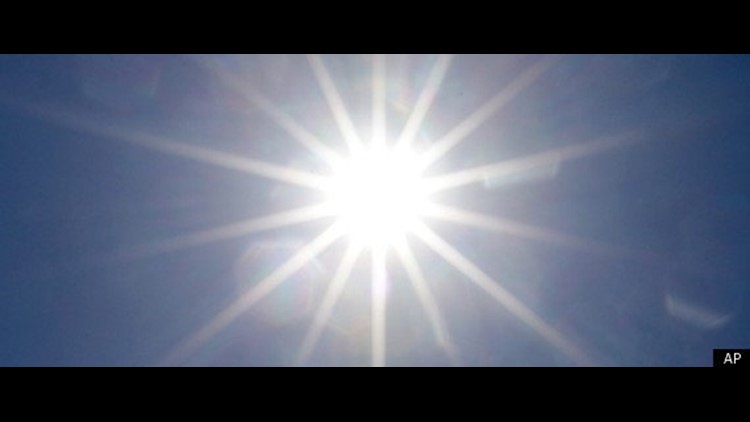The summer heat is back. After enjoying below average temperatures, the heat and humidity return and so do the dangers associated with them. “Excessive heat can be deadly; it has caused more deaths in recent years than all other weather events,” says Brigette Williams with the American Red Cross.
To protect yourself and your family, the American Red Cross offers these tips:
- Stay hydrated by drinking plenty of fluids. Avoid drinks with caffeine or alcohol.
- Avoid extreme temperature changes.
- Wear loose-fitting, lightweight, light-colored clothing. Avoid dark colors because they absorb the sun’s rays.
- Slow down, stay indoors and avoid strenuous exercise during the hottest part of the day.
- Postpone outdoor games and activities
- Use a buddy system when working in excessive heat. Take frequent breaks if working outdoors.
- Check on family, friends and neighbors who do not have air conditioning, who spend much of their time alone or who are more likely to be affected by the heat.
- Check on animals frequently to ensure that they are not suffering from the heat. Make sure they have plenty of cool water.
- If someone doesn’t have air conditioning, they should choose places to go to for relief from the heat during the warmest part of the day (schools, libraries, theaters, malls).
NEVER LEAVE CHILDREN, PETS IN THE CAR.
“We can’t repeat this warning enough,” stated Williams. “Even for what you think is a quick errand. Temperatures inside a car can quickly reach 120 degrees. Your child’s or pet’s life is not worth putting at risk,” she says. “We also recommend downloading the Red Cross first aid app which has a lot of useful health and safety tips and videos including symptoms of heat related illnesses such as heat exhaustion and heat stroke,” stated Williams.
HEAT EXHAUSTION
Excessive heat can lead to sunburn, heat cramps, heat exhaustion and heat stroke.
If someone is experiencing heat cramps in the legs or abdomen, get them to a cooler place, have them rest, lightly stretch the affected muscle, and replenish their fluids with a half a glass (about 4 ounces) of cool water every 15 minutes.
If someone is exhibiting signs of heat exhaustion (cool, moist, pale or flushed skin, heavy sweating, headache, nausea, dizziness, weakness exhaustion), move them to a cooler place, remove or loosen tight clothing and spray the person with water or apply cool, wet cloths or towels to the skin. Fan the person. If they are conscious, give small amounts of cool water to drink. Make sure the person drinks slowly. Watch for changes in condition. If the person refuses water, vomits or begins to lose consciousness, call 9-1-1 or the local emergency number.
HEAT STROKE IS LIFE-THREATENING.
Signs include hot, red skin which may be dry or moist; changes in consciousness; vomiting and high body temperature. Call 9-1-1 or the local emergency number immediately if someone shows signs of heat stroke. Move the person to a cooler place. Quickly cool the person’s body by immersing them up to their neck in cold water if possible. Otherwise, douse or spray the person with cold water, or cover the person with cold, wet towels or bags of ice.



